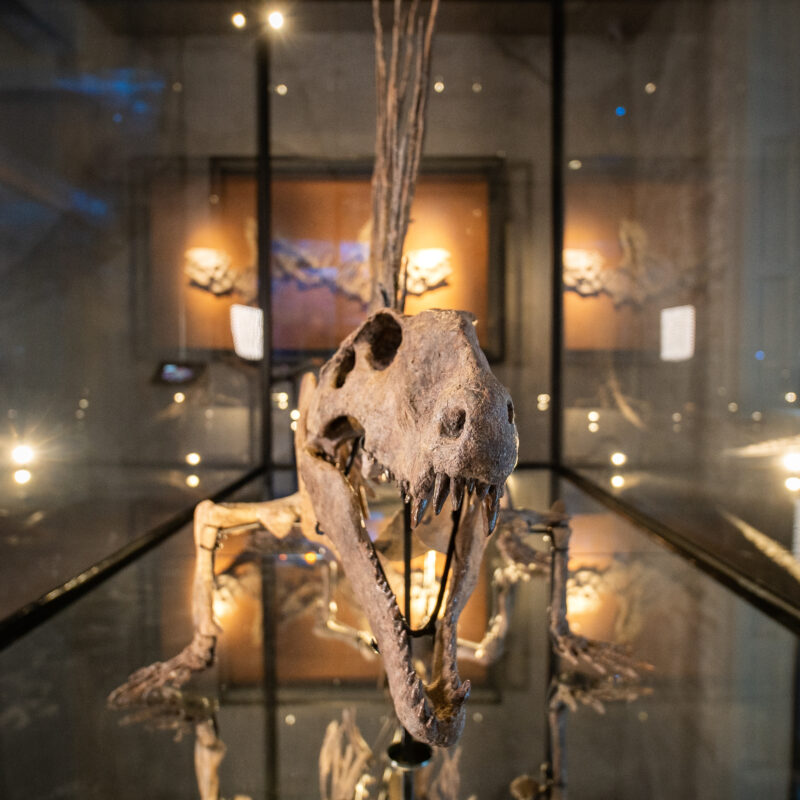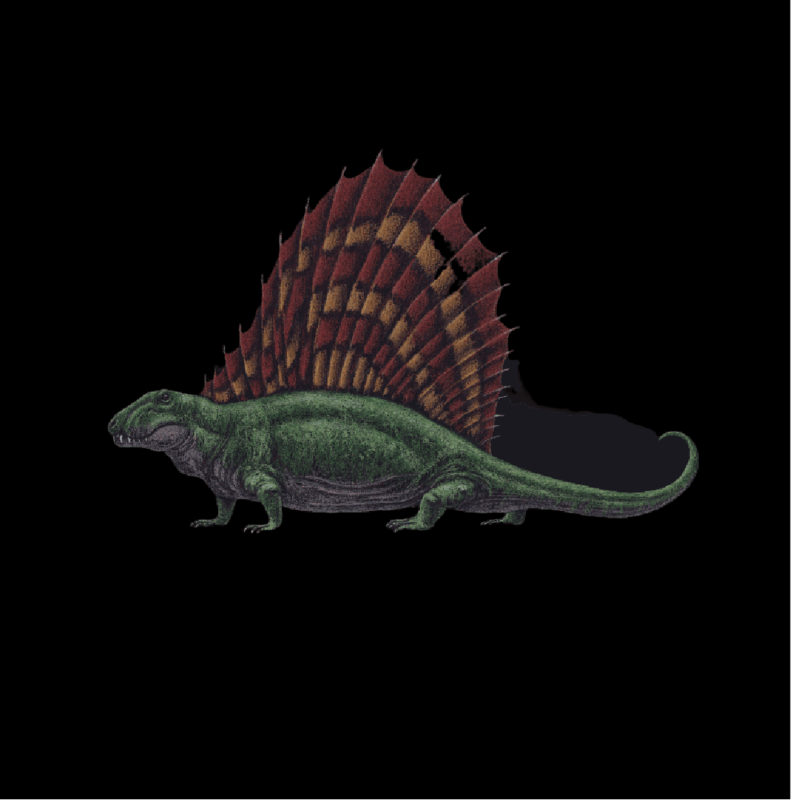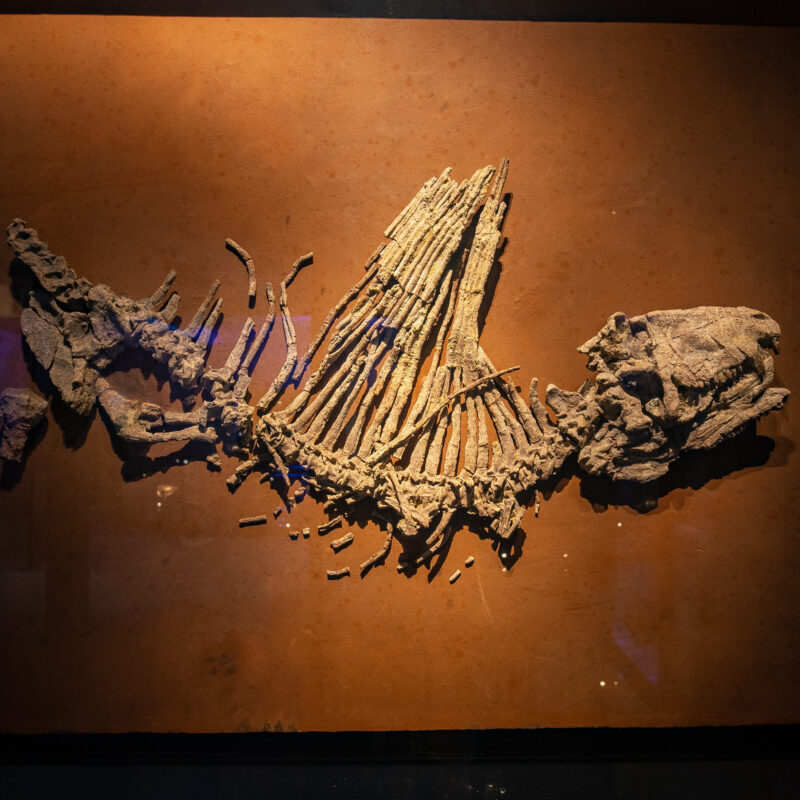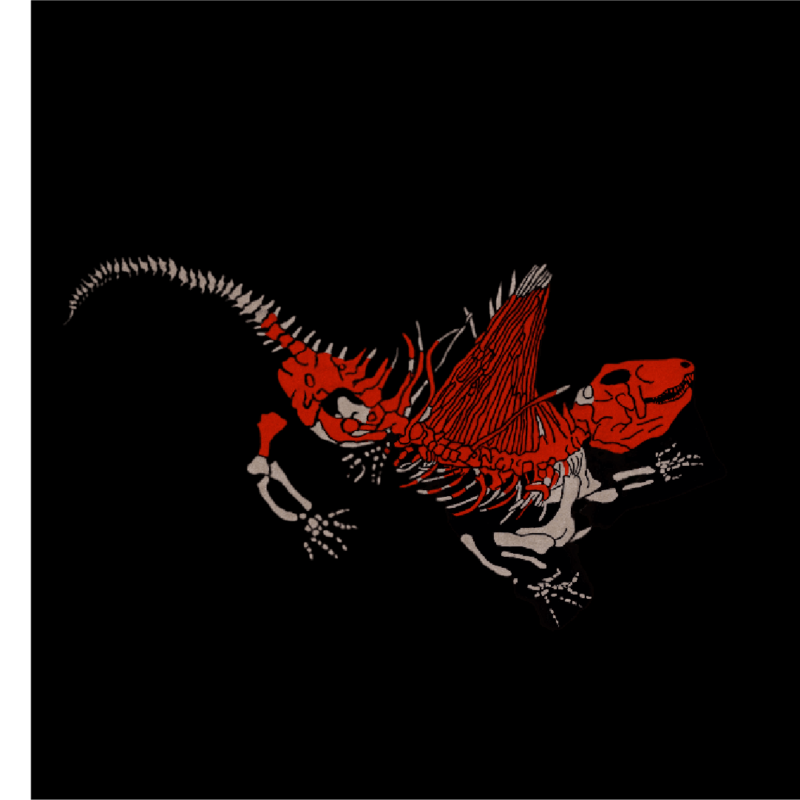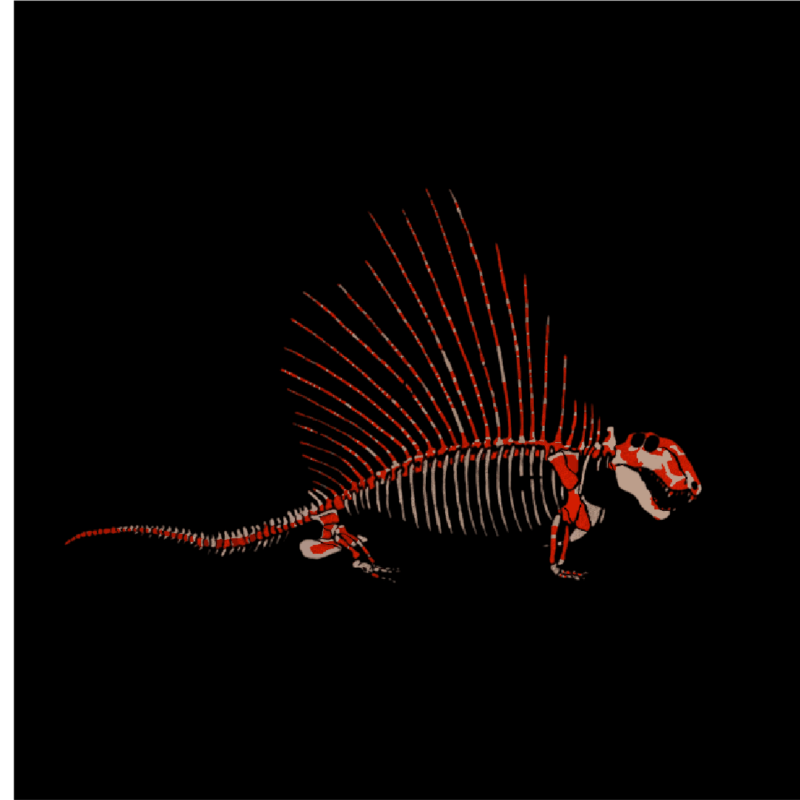Dimetrodon
The top predator of the Permian period
Dimetrodon roamed the earth between 280 and 265 million years ago. Although it mostly resembles a reptile, or even a lizard, Dimetrodon is actually more closely related to us mammals. It is known as a ‘mammal-like reptile’. During the Permian period, Dimetrodon was one of the largest predators on land with a firm place at the top of the food chain, calmly surveying the barren and arid landscape of the time. The name Dimetrodon actually means ‘two measures of teeth’ because its sharp and pointed teeth distinguished it from other reptiles.
In addition to its ostentatious set of teeth, Dimetrodon drew plenty of attention when it sauntered over with its dorsal sail sticking up from its back. The sail was formed by elongated spines and extended straight up from the vertebrae. But what on earth did Dimetrodon use this dorsal sail for? Palaeontologists are still asking this question, but a possibility is that it was used to control its temperature – in exactly the same way as elephant ears and our own earlobes. Because surely you knew that your earlobe works like a little heating and cooling pad!
Size: Up to 3.5 metres long
Weight: Up to 250 kg
Period: The Permian Period (280–265 million years ago)
Food: Carnivores
Habitat: On land
Locations: skeletons in North America and Europe. Footprints found in the North American state of New Mexico
